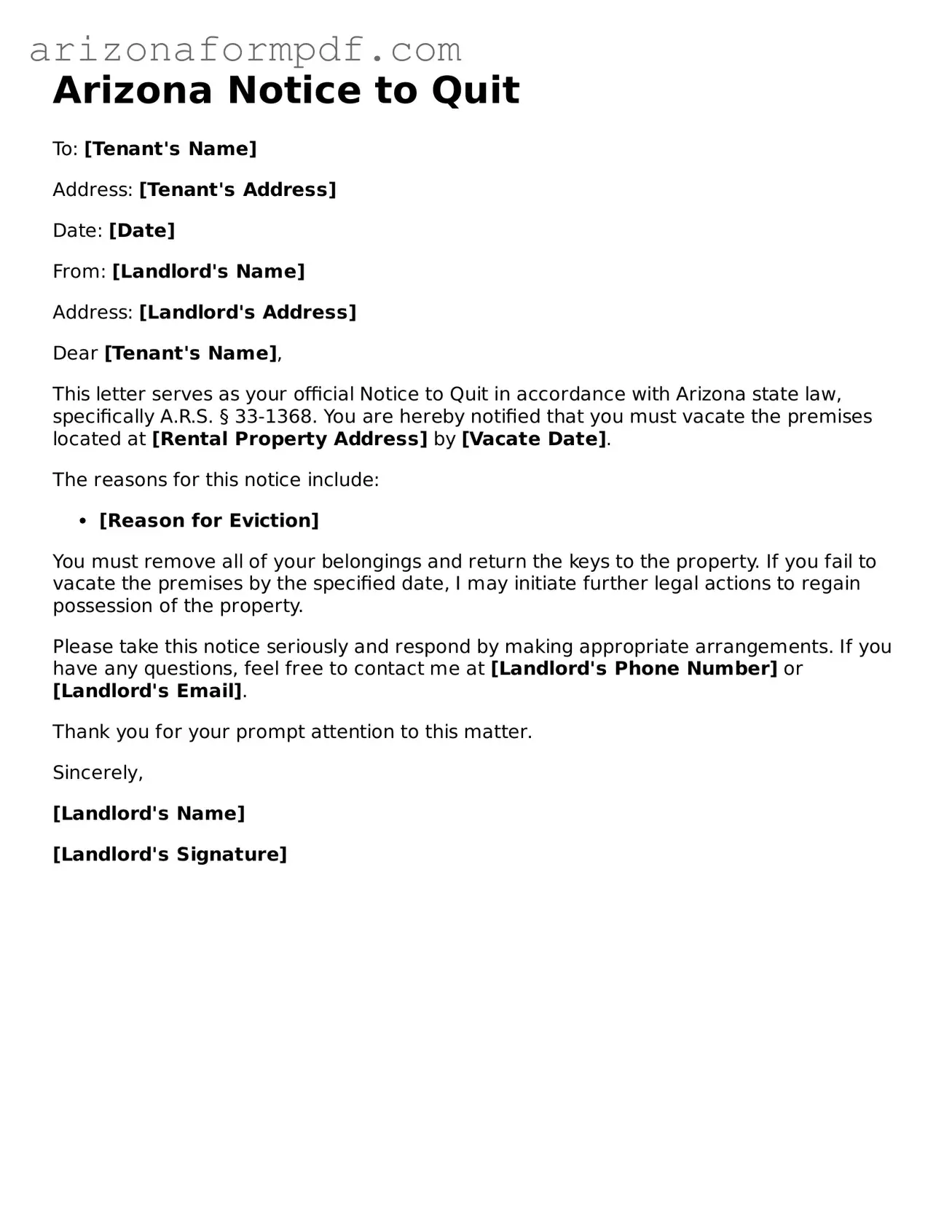The Arizona Notice to Quit form is similar to the Eviction Notice, which is often used when a landlord seeks to remove a tenant from a rental property. Both documents serve as formal notifications to the tenant regarding the termination of their lease. The Eviction Notice typically outlines the reasons for eviction, such as non-payment of rent or violation of lease terms, while the Notice to Quit focuses specifically on the tenant's obligation to vacate the premises. Both documents require clear communication to ensure that the tenant understands their rights and responsibilities.
Another document similar to the Notice to Quit is the Lease Termination Letter. This letter is used by either party to officially end a lease agreement. Unlike the Notice to Quit, which may be issued due to specific infractions, the Lease Termination Letter can be used simply to inform the other party that the lease will not be renewed at its expiration. Both documents emphasize the need for proper notice and adherence to the terms of the lease, ensuring a smooth transition for all involved.
The Pay or Quit Notice also shares similarities with the Notice to Quit. This notice is specifically directed at tenants who have failed to pay their rent. It gives them a chance to either pay the overdue rent or vacate the property within a specified timeframe. Like the Notice to Quit, it is a formal communication that outlines the consequences of non-compliance, helping both parties understand their options and obligations.
The Cure or Quit Notice is another document that resembles the Notice to Quit. This notice is issued when a tenant violates a specific term of the lease agreement, such as having unauthorized pets or excessive noise. The tenant is given the opportunity to correct the violation or face eviction. Both documents are crucial in the eviction process, as they provide tenants with a clear understanding of what needs to be resolved to maintain their tenancy.
The Demand for Possession is also akin to the Notice to Quit. This document is typically used in the eviction process to demand that a tenant vacate the property. It is often a precursor to filing an eviction lawsuit. Both the Demand for Possession and the Notice to Quit serve as formal notifications that a tenant must leave the property, emphasizing the seriousness of the situation.
The Written Notice of Lease Violation is another similar document. This notice informs tenants of specific lease violations and provides them with a chance to remedy the situation. It is a more detailed approach compared to the Notice to Quit, as it outlines the exact nature of the violation and the necessary steps for resolution. Both documents aim to promote communication and resolution between landlords and tenants.
The Notice of Non-Renewal is also comparable to the Notice to Quit. This document is used to inform a tenant that their lease will not be renewed at the end of its term. It serves as a formal notification, similar to the Notice to Quit, but focuses on the expiration of the lease rather than a breach of terms. Both documents require timely delivery to ensure that the tenant has adequate time to make arrangements for moving.
The Notice of Default is another document that shares similarities with the Notice to Quit. This notice is often issued when a tenant has failed to meet their obligations under the lease, such as failing to pay rent or violating other terms. The Notice of Default alerts the tenant to the issue and provides them with an opportunity to correct it. Both documents serve to communicate serious issues that may lead to eviction if not addressed.
Lastly, the Rental Agreement Termination Notice is akin to the Notice to Quit. This notice is used to terminate a rental agreement, either by the landlord or the tenant. It outlines the reasons for termination and provides a timeline for vacating the property. While the Notice to Quit focuses on eviction-related issues, both documents aim to clarify the end of the rental relationship and ensure compliance with legal requirements.
